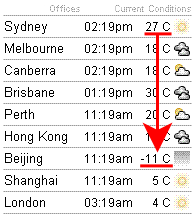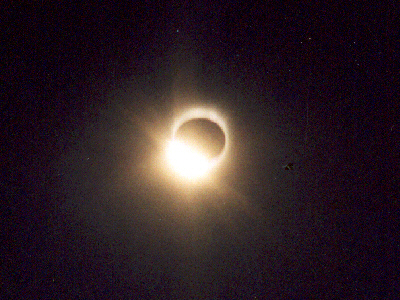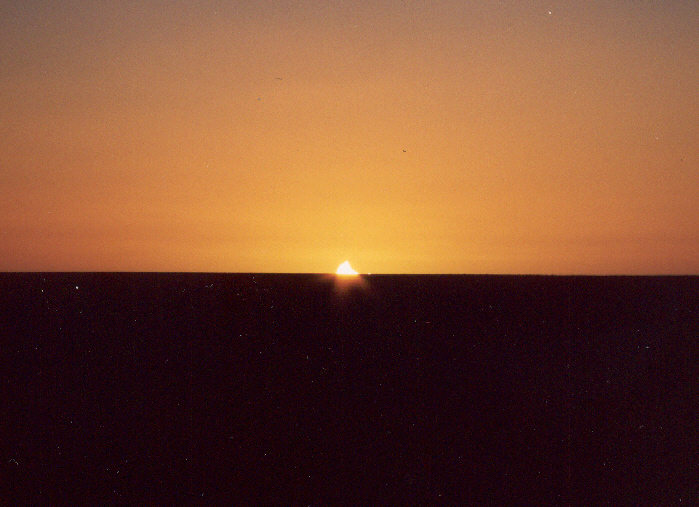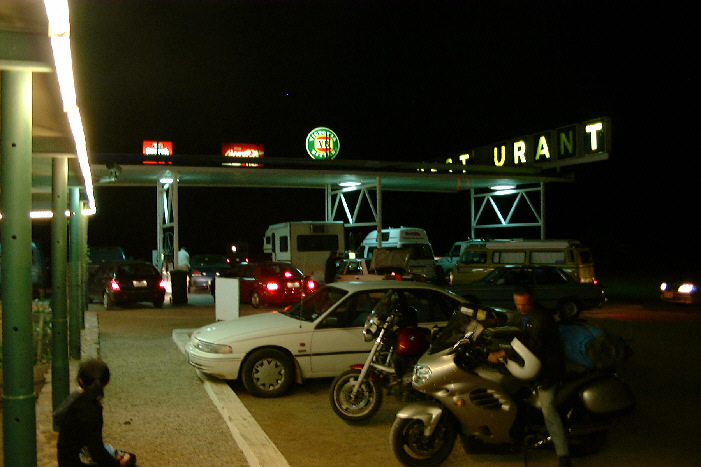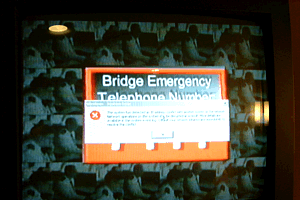“What’s that?” Paul asked, pointing quizzically to a bag sitting on one of our beds.
“That’s a tent.”
“Tents are provided,” Paul declared. “You can leave it here.”
We were in our hotel room with our trek organiser who was busy inspecting our gear. The fact that my climbing companion had come along toting an 8-man tent was only one indication of our under-preparation. Having done mission work in the hot and humid climes of Northern Africa for the past several weeks, Shen had turned up for a trek which would take us through subzero temperatures and up almost six kilometres of rock with little more than a set of shirts, business pants and that heavy tent. He had brought along a tent on a whim, having forgotten what I had told him not to buy in a packing list I had emailed months ago.
To be fair, he had relied on me to lug most of the additional equipment he would need from Sydney. I was amply assisted by his ever-concerned mum, who had turned up at my apartment with a 10 kilogram bag filled with enough of his clothing for a month-long skiing trip. She insisted that it was all essential. I left Sydney with everything except sleeping bags, which I had been told would be substantially cheaper to buy in Hong Kong where I would be passing through first.
I, on the other hand, was under-prepared in another way. Fiona, a friend who had climbed the mountain the previous year, had warned me to follow a regular training regimen of walking at least four weeks before departure. I never really got around to it. Every time someone asked what I had done to prepare for the climb I would respond vaguely with, “oh, just walking around here and there.” My credibility was somewhat preserved when I pointed out mountain guides which stated that jogging or other cardio work doesn’t really help with mountain climbing and all you can really do to train is to walk (preferably up hills).
In reality, my training consisted almost entirely of walking around Hong Kong searching for a sleeping bag which would allow me to weather temperatures down to -15°C without a detour to hypothermia. This, in hindsight, involved a considerable amount of exercise given that finding such a sleeping bag in Hong Kong proved to be much harder than anticipated.
We walked into several outdoor stores in Mongkok (which ordinarily is a district in which you can buy anything ever made) only to be met with looks of disbelief and a declaration that such bags had to be specially ordered in from another continent. One wide-eyed vendor responded by pushing me a 0°C bag and telling me to “just wear more clothes to sleep”.
After several days, I located two allegedly eligible sleeping bags. One was sold by a store owned by a local chap who had scaled the highest mountain on all seven continents and had reached the North and South poles. The sleeping bag he was offering was called “Eusebio Sport” and was rated to -15°C. The name was decidedly European-sounding and seemed promising until Google failed to turn up a single hit on the bag.
The other candidate sleeping bag was made by Triton, which turned out to be a local manufacturer. It was comfort rated to -10°C, but had, unusually, an extreme rating of only -15°C. The “extreme rating” is normally defined as the lowest temperature in which you can sleep without dying along the way. It’s normally significantly below the “comfort rating”, the lowest temperature in which you can theoretically get a good night’s rest. It was somewhat disturbing to me that apparently only five degrees separated unbroken sleep from death. After a great deal of equivocation, I elected to go with the Triton and bought two of the 1.2 kilogram bags.
Mount Kilimanjaro is Africa’s highest mountain, standing at 5895 metres. It was formed as the result of volcanic activity and is not part of a mountain range. Consequently, it’s the world’s highest free-standing mountain, rising up starkly from the plains of northern Tanzania, near the Kenyan border. Its silhouette dominates the horizon from nearby Moshi and Arusha, the two towns most commonly used as launching pads for those who would climb Kilimanjaro. Kilimanjaro’s dark expanse stretches upwards, starting from one end of the horizon - and you have to physically rotate your head to see this - tracking gradually upwards towards a peak, before falling away again. Often shrouded in clouds, you can occasionally glimpse the snow and glacier capped peak of Kilimanjaro, glistening in the bright African sun.
The fact that Kilimanjaro is considered to be a “non-technical” climb is deceptive. “Non-technical” merely means no special equipment is needed - no pick-axes, ropes, crampons or other rock- or ice-climbing gear. But non-technical doesn’t mean it’s easy. Any mountain above 4000m puts a climber at risk of AMS, or Acute Mountain Sickness - an affliction which develops among some people who climb above about 3500m. Curiously, predisposition to AMS appears to be independent of a person’s fitness.
I had booked the trek after discovering Paul Robert Shayo on Lonely Planet’s Thorn Tree forum while looking for trekking company suggestions. He had been given several recommendations, all positive and all from different people over a reasonable period of time. I emailed him and found him to be comfortingly responsive and honest. At under USD 1,000 for our 6-day trek (excluding tips), his offering provided remarkably good value as well, especially compared to other companies pricing their programs at multiples of that.
Paul, a local Tanzanian, had been a guide for about eight years before he struck out and started his own company, organising treks and safaris. Our guide, who was not employed by Paul but had been called in just for our trek, told us he was a good man and his profit margins were relatively thin. Now somewhat portly in stature, it was clear that Paul had not been regularly guiding for some time. However, if you’re looking for a trekking company, look no further Paul was fantastic. Always flexible and never pushy, he was simply professional to a level which is rare in Africa.

Paul (right)
Back in Moshi, Paul bundled us into a minivan in which our support crew was already waiting a guide, a cook and four porters. As if that wasn’t enough, we picked up another two porters on the way to the mountain, bringing our entourage up to eight. Eight of them for the two of us. We felt ridiculous.
On the floor of the minivan was all the stuff that was coming with us up the mountain, a jumble of baskets and mismatched bags. Next to the bulbous metal gas cylinder was a thatched basket full of fruits and vegetables. Eyeing the whole pineapple conspicuously sticking out the top, we jokingly asked our guide, “so where are you hiding the chicken?”
He turned around to us. “Do you want to eat chicken?”
We were startled by the seriousness in his voice. It sounded like he was actually ready and willing to procure a chicken for us. We quickly assured him he were just joking.
Naturally talkative, Shen launched into conversation with the crew as we drove towards the Machame Gate, the starting point for the climb. Having been to Africa several times in the past, he seemingly knew the cultural norms and started interrogating anyone who spoke English in the van (which really was only Daniel and Paul) about whether they were married, whether they had children, what tribe they were from and how many cows they had to pay in order to marry their wife.
Our guide’s name was Daniel, a quietly spoken Tanzanian father of two who had been guiding for about a decade. He responded rather reticently with very short answers to Shen’s barrage of questions. After a little while, Shen popped his “absurd question” test.
The “absurd question” test is given to a person whose grasp of English is ambiguous in order to ascertain whether they actually understand what you are saying to them, or in order to determine whether they are acting reasonably. With Paul, Shen had been speaking to him about Tanzania and his opinions about neighbouring African nations. Paul had easily passed the test when Shen asked, “So do you think Tanzania is the most advanced nation in Africa?” Trying to goad Paul into saying something overtly parochial, Paul looked at Shen as if Shen was clueless and proceeded to rattle off a list of African countries which were clearly further along the developmental chain than Tanzania.
Daniel had answered with one word responses too many consecutive times, triggering the test.
“So, you’ve been guiding for a long time?”
“Yes.”
“Wow, you must be very fit!”
Slight nod. “Yes.”
“So, can you climb the mountain in one day?”
Pause. “Yes.”
“In one day? All the way to the top?”
“Oh, yes.”
“And back down again?”
“
Yes.”
“You can climb all the way to the top and all the way down in one day?”
“Yes.”
“You’ve done that before?”
“Yes.”
Shen and I shot each other nervous glances. It seemed that Daniel’s guiding duties would see him just pointing the way up the mountain and we wouldn’t be getting much other value-added services from him. How little did we know.
There are about five major routes up the mountain which start at different points around its base. Each leads to one of three main routes up Kibo, the summit dome of Kilimanjaro, where the ground cruelly and materially steepens up until the crater rim.
The most popular route is the 5-day Marangu route, also nicknamed the Coca-Cola route due to its popularity and relative ease. It approaches Kibo from the east and follows a relatively uniform gradient which doesn’t get terribly steep. However, it’s said that about 75 percent of people who attempt that route fail to reach the summit, due to a lack of time to acclimatise to the altitude. Most recommend adding an extra day into the program for acclimatisation if you’re using this route.
Our route, the 6-day Machame route (nicknamed the “Whiskey route” because it’s, well, harder), begins from the south-west approaching Kibo from the west. One acclimatisation day is built in, during which you circle the base of Kibo along the Southern Circuit before attempting to summit using the south-east route up Kibo.
Other routes are the Lemosho route, which begins from the east at a slightly higher starting altitude; the Umbwe route, a steep, direct-access route from the south; and the Rongai route, which starts from the north near the Kenyan border. The Lemosho, Machame and Umbwe routes all interconnect around Kibo, and the more hardcore climbers can access Kibo via the “Western Breach”, a western route which passes by the Arrow Glacier. Although the western wall is generally too steep to climb, a section of it collapsed in ancient times (hence it’s called a “breach”), making it vaguely climbable (or “scramble-able” in more accurate climbing terms). The Western Breach closed in January 2006 when a rock fall killed three Americans who were ascending it. The route reopened in December 2007 but numerous tour companies still refuse to use it due to continuing safety concerns.
Some have attributed the rock fall to the effects of global warming melting the ice which usually holds the scree (loose pebbles and rocks) which is prevalent at the mountaintop together. In fact, if you have seen An Inconvenient Truth, global warming has been named as the reason why the great glaciers atop Kilimanjaro are retreating. Although the cause has been disputed (the alternate explanation is local climate changes not directly related to global warming), there is no doubt that the glaciers are disappearing and some predictions have forecasted that Kilimanjaro will lose its white cap as soon as 2015. Since 1912, Kilimanjaro has lost over 80 percent of its ice fields.
Day 1 (11/1/08): Machame Gate to Machame Hut (up 1200m)
Due to a mishap involving our luggage being lost for four days after arriving in Africa, we arrived at Machame Gate at about 3.30pm. Kilimanjaro is part of a national park and is overseen by an authority which charges expensive park fees. The park fees (over USD 600 per person in our case) go towards maintaining the park’s facilities and providing rescue services.
Paul was about to pay our park fees when we hit a roadblock. The park ranger came out and told us it was too late to start and that we should come back tomorrow. When pressed he said that park safety regulations forbade it. But, if there is anywhere in the world where regulations can be overlooked, Africa is it. After a quarter hour of backroom negotiations, our resourceful organiser came through for us. He shook our hand, wished us good luck and said he’d be back in five days to pick us up. With our daypacks and walking sticks in hand, Shen and I set off, leaving the porters to attend to all the other baggage.
The weather at the start of the route was perfect. Cool, not a trace of humidity, and well-shaded by the trees bordering the path. The first day’s path winds through 16 kilometres of rainforest, rising 1200 metres to bring us to Machame Hut, a campsite 3000 metres high on the border where the rainforest gives way to a moorland ecosystem. Although the rainforest was dense, an occasional clearing allowed the sun to break through and we could see the canopy at the mountain base gradually pulling away a satisfying sign of progress. Rain constantly threatened, but the skies never managed more than a faint drizzle.
Because of the late hour of our start, we were only three hours in when the sun set, plunging the trail into darkness. We pulled out our headlamps and trudged on, making good time and arrived at Machame Camp at 8.30pm to the lingering smell of other climbers’ dinners. Of course, they had all reached there about the time we had set off. Not accustomed to walking or working in the dark, our entourage nonetheless set about industriously preparing dinner without complaint, borrowing my headlamp for light.
Our tent was almost set up by the time we arrived and all we had to do was sit in it and wait for dinner. The group’s waiter was an earnest porter who introduced himself as Goodfred. He laid out a tablecloth inside our tent and served up a surprisingly nourishing meal of roasted potatoes, beef stew and mangoes, accompanied by our choice of tea, coffee or Milo.
By the time we had finished, my backpack still hadn’t materialised and it turned out that the poor porter who had been saddled with it had gotten stranded in the dark. Without being able to see the path, he apparently had wisely elected to stay put until help arrived. Daniel sent another porter armed with a small torch to the rescue. My bag turned up at about 10.30pm.
The porters had a lot to do and it was to our never-ending amazement what we witnessed them endure. We had been recommended to drink about four litres of water a day. I don’t drink much ordinarily (sometimes earning me the sobriquet of “camel”) so I had only packed 1.5 litre, 1 litre and 500 millilitre drink bottles. About halfway into the first day’s walk, two porters who had been trailing behind approached us for our water bottles. Porters’ English skills are generally tenuous, so we thought they were offering to refill our bottles at a nearby stream. It turned out that they had not even packed water bottles for themselves and so were absconding with ours for the rest of the trek. We never saw them again (the bottles, not the porters).




Left to right then top to bottom: Machame Gate; A few minutes into the trek with Godfrey ahead; The waterbottleless porters; Daniel and Filippo preparing dinner in the dark
Day 2 (12/1/08): Machame Hut to Shira Camp (up 800m)
We were feeling pretty good after the first day and I awoke at 7.00am. Shen had already been up for an hour, having had to answer to the “second” call of nature in the pre-dawn light
twice. I greeted him with the words, “Was your piss clear and copious?” That was supposedly how, as a rule of thumb, you could determine if you were drinking enough water.
Campsite toilets were little more than cramped wooden boxes with a hole cut into the floor. The smell was unholy, with the box stiflingly small and the temperature at that elevation not sufficiently cold to mask much of the smell. I wondered why they didn’t make the toilet box larger to allow for more air to circulate, but Shen remarked that it was to allow you to keep your balance. If you slipped, you could jam your hands against both walls – and surely enduring the stench was preferable to falling into it, as Shen had almost done, the thin film of urine on the toilet floor having turned to slippery ice during the night. I spent several minutes convincing Shen and myself that the brown matter on the bottom of his trouser legs was mud and not something more organic.
Breakfast was a multicourse affair of bread, mangoes, sausages, cucumbers, tomatoes and eggs. One other dish was served to us with the proclamation that it was “porridge”. When we lifted the lid in ravenous expectation, Shen’s reaction was of intense dismay.
“Oh. It’s posho.”
“What?”
“Try it, you’ll see.”
I sniffed at the opaque white liquid gingerly. “Doesn’t seem too bad.”
It looked like oats, without the solid bits. After a few spoonfuls, the taste finally got to me and I gave up. Posho is maize flour mixed with water, a staple food for the region, similar to rice’s status in Asian countries. Often used as a semi-solid accompaniment to meals, Filippo the cook had added extra water to turn it into something resembling breakfast porridge. While doing mission work, Shen had to endure it at virtually each meal and his distaste for it was clear.
Goodfred came to clear our plates and looked at us when he found our posho pot still brimming.
“You don’t like?”
We lied. “Oh no, it’s good, but we are full.”
Images of my parents around the family dinner table telling me that “people in Africa would kill for your leftover food” filled me head and the irony of it was not lost on me.
The second day saw us begin with a steep ascent. “The most difficult part except for summit day – it gets easier,” Daniel assured us encouragingly.
Any illusions we had of being competitive with the porters were dashed when they showed us what they could do when they could actually see where they were going. We had headed out before them, leaving them to break camp and pack everything up. Within twenty minutes, they had strode past us up the rocky path, bags perched on their heads, resolutely trudging past our panting selves.
The incline was relentless and soon the forest canopy gave way to moorland. We made our way through low-lying scrubbery filled with peculiar plant-life prevalent on Kilimanjaro. Due to the rapidity of the ascent, the day would be relatively short – only four to five hours before making our destination.
That morning we met a lot of the other groups that were climbing the Machame route. Some were pairs like ours, others were groups of over a dozen accompanied by an army of porters. Climbers have to register in a logbook at each campsite and from this we learned that we were the youngest people in the camp, with the oldest being impressively over 70. The climbers were mostly European (including a superlatively- named fellow called Fuchs Gerlard), with a few North Americans. No Aussies.
We passed by the group of Russians who were taking a rest on a pile of rocks. They explained they were from the Kamchatka Peninsula, which explained why they had all been able to strip down to their boxers in order to enjoy the brisk mountain air. With the sun hidden by clouds which had rolled in, the temperature was only a few degrees above zero.
There was also the friendly German, Reiner, and his sister Laura who had been climbing mountains for most of their lives. We nicknamed Reiner “Budgie” for his selection of skin-tight leggings as pants of choice. They usually dropped by each day at the campsites for a quick chat.
Among the larger groups was a troupe of Canadians which Shen had accidentally mistaken for Americans. After taking some mock offence, one of the group piped up with a “G’day mate!”
A passing Kiwi quickly retorted with, “There’s one in every crowd, EH?”







Left to right then top to bottom: Morning at Machame Hut including a view of Kibo; Looking back along day 2’s trail; The valley below from a lookout point; Daniel and I; Relaxing in the tent at Shira Camp; Shira Plateau; Dinner’s coming!
The path flattened out a bit after lunch and we soon arrived at Shira Plateau at 1.30pm – a rocky outcrop offering views of nearby Mount Meru swathed in clouds. Our entourage had already set up camp and had a tub of warm washing water ready by the time we wandered in. As soon as I stopped walking, I began to develop a dull headache and a searingly hot, flushed face.
At 3800 metres, Daniel assured me that this was a normal side effect of the altitude and of being tired from our late finish the previous day. I took an analgesic and lay down in the tent for about an hour but it didn’t improve. I had a bottle of Diamox, which I think is ordinarily used with stroke victims but is also used to treat AMS because it’s supposed to increase oxygen absorption, but I had been advised to avoid taking it. Shen was feeling fine. For afternoon tea, Goodfred came by and gave us some fresh popcorn, peanuts and tea.
At about 4.00pm, the mist and clouds covering the plateau rolled away and the sun came in. The warmth gave me a renewal of energy and I emerged from the tent to take in our surroundings and grab some photos. I even decided to brave the toilets, quickly coming to grips with the art of “shit and run” where you minimise the time spent with your nose mere centimetres away from the action hole. Woe be to you if you’re constipated.
Daniel came over to us for his daily briefing chat. As the reduction in atmospheric oxygen resulted in a corresponding decline in our loquaciousness, Daniel seemed to make up for the shortfall and began to open up to us. He had started his Kilimanjaro career as a porter, back in the bad old days where there were no weight limits on what a porter should carry. If a porter could lift it, he could carry it. This saw porters struggle with loads exceeding 30 kilos hoisted over their heads as they negotiated the perilous terrain. Typically understated in demeanour, Daniel described his first time up the mountain as “very hard work”.
He recounted his quickest trip where he escorted a “very strong” Scotsman travelling solo. The Scot had turned up, packed three litres of water, lunch, and then set off for a jog. Nine hours later they had gone all the way up the mountain and back down again. We were incredulous. When we learned the record for ascending and descending Kilimanjaro was a little over eight hours, we realised that Daniel was actually telling the truth and were immediately filled with even more respect for him.
The conversation then turned to weightier matters, like the post-election tribal-based conflict occurring in Kenya at the time. Daniel found the violence as senseless and distressing as we did. Tanzania has always been peaceful compared to its neighbours, and Daniel felt that this was largely based on a common language among tribes (Swahili) and a sense of nationalism as opposed to tribalism helping people to get along.



Left to right then top to bottom: Morning view of Mt Meru (you can also see a toilet in the middle of the picture); Morning view of Kibo; Panoramic, an hour or so into day 3’s walk
Day 3 (13/1/08): Shira Camp to Barranco Hut (up 700m, down 600m)
In the morning, my headache had thankfully subsided. We made an early 8.30am start and were the first tourists out of the gate. Today was the acclimatisation day. The conventional wisdom in relation to acclimatisation is summed up with the maxim, “Walk high, sleep low.” This practice apparently helps the body to get used to the altitude, but the reasons why it works have never been satisfactorily explained to me.
Within an hour, the moorland gave way to desolate boulders and rockier terrain – a sign that, at above 4000 metres, we were entering the arctic desert ecosystem. I had never walked at this altitude before. The highest I’d been before this was when I hiked in the foothills of the Annapurna region in the Himalayas. My headache soon returned, growing with each step. With frequent rest stops, a steady stream of porters, followed by a handful of climbers, were flowing past us. My resting pulse rate was over 120. My active pulse rate was as high as 180.
The fatigue and effects of altitude were further exacerbated by the sudden jarring changes in temperature. I was wearing a thermal t-shirt and my windproof North Face jacket (the same one I bought in Beijing, the best clothing purchase I’ve ever made). When the sun was out, the heat would be intense and I was forced to take off the jacket. An uneven coverage of sunscreen led to sunburn on parts of my face and arms (sunburnt earlobes are a first for me). Then clouds would suddenly roll in and the temperature would plummet. This made walking more comfortable, but as soon as I stopped to rest, the cold would soon bite and gusts of wind would cut through anything not windproof. Every 200 metres up, the ambient temperature would drop by another degree.
Despite the continual energy-sapping changes in clothing, I was bound to sweat even in the cold wind. The sweat seeped into the clothing, making it icy when the wind was blowing on it, and uncomfortably clammy when it was not. The clothing did not really have a chance to dry, given the conditions.
It was a hard slog and when we reached the Lava Tower Junction, I was relieved that Daniel had decided it was better for us not to go via the Lava Tower Route (4600m) but to use the southern trail (4500m) instead. My headache was debilitating now.
By lunchtime we had reached 4500m, the day’s high point and it felt as though the boulders we had been walking among were now thudding into my temples. My appetite had disappeared and from the packed lunch, I could only manage to down a sausage and a small cake before nausea overcame me. Two Nurofen tablets did little to ease the pain. Galvanised by Daniel’s assurance that the rest of the day would be downhill, I set off quickly, having had enough of sitting with my head wedged between my knees.
As we descended into the moorland, my headache began to slowly subside. I don’t know if that was because of the altitude or because I was no longer exerting myself on an uphill slope. Nonetheless, within an hour my senses were beginning to re-establish themselves and I was able to communicate with more eloquence than grunts and mumbles.
The moorland on the approach to Barranco Hut (3900m) was home to some bizarre vegetation (the area was known as the Garden of the Senecias).
As we neared our campsite, the clouds parted in the distance and I saw the fearsome fixture of the Barranco Valley which stopped me in my tracks.
“That has to be some sort of fucking joke,” I said, all good humour having deserted me.
Along one side of the valley loomed the Great Barranco Wall, a massive 300 metre tall cliff face up which some enterprising soul had decided to carve something resembling a path. In the distance the wall looked almost vertical, but you could just make out a faint dark line zigzagging up it. As the mist rolled over, hiding it again, I was reminded of the stairs of Cirith Ungol in Return of the King which Frodo, Sam and Gollum climb in Mordor. We would be scaling it the next day and my comparisons would prove to be not too far off the mark.
Given the brevity of our lunchbreak, we were among the first to arrive at Barranco (but after the porters of course, who had dutifully already set up camp). I charged down the path yelling, “Quick, we must alert Gondor!” only to run out of steam mere seconds later. “On second thoughts, Gondor can burn.”
Exhausted, we were in our sleeping bags and asleep before the sun had completely set at 7.00pm. Even though my sleep typically consisted of a five hour block of deep sleep followed by a series of 1-2 hour “naps”, sleeping on the mountain was decent and I usually woke up feeling rested.








Left to right then top to bottom: Porters pass me while I’m struggling up the mountain; The Shira Plateau to the left of the trail; Another trail view; Porter; Daniel; Near the Lava Tower Junction; Garden of the Senecias; The Great Barranco Wall
Day 4 (14/1/08): Barranco Hut to Barafu Camp (up 700m, 3 valleys in between)
In the morning, we woke up to the bitter cold. Our sleeping bags had shielded us from the cold admirably (despite having neglected to pack insulating foam mats to put under them) and we were loathe to leave them. Mornings were always cold and clear and the Great Barranco Wall loomed ominously in all its terrible glory. Its height meant that the sun had not yet risen over it and by the time we had finished breakfast, several groups had already started to climb it.




Left to right then top to bottom: Above the cloudline in the morning; Morning view of Kibo; About to climb the Great Barranco Wall; The Great Barranco Wall – you can see people climbing it in the full-sized picture
The Great Barranco Wall has little more than a rough “path” cut up a very steep incline. Climbing it involves about an hour and a half of scrambling up some semi-slippery rocks. I actually found it strangely enjoyable I’ve been rock-climbing for a couple years now and the experience has somewhat desensitised me to heights, just as long as there’s a secure handhold nearby. Not to say that my heart didn’t flutter, like at a point where a large, smooth rock squeezes the trail out from the left. To the right is a sheer drop of tens of metres and the ground is a flattish piece of stone sloping away from the wall.
Shen was petrified. Having outpaced me on all the uphill sections, he was now struggling to cross some of the more precarious sections of the wall. Every time he froze up, Daniel would have to reach out a helping hand and firmly pull him across. Daniel took custodianship of Shen’s camera and from that point on was taking more photos with it than Shen. Interestingly, Daniel knew exactly how to use a digital SLR camera and many of the photos on Shen’s camera were snapped by Daniel’s capable hands when we were too exhausted to think.
The porters, as always, outdid themselves. A steady procession threaded themselves past us, often without using their hands for balance. There was some concern in their eyes, but otherwise, they took it in their usual stoic stride. When one particular porter made his way past with a large old-style transistor radio cradled in one arm – accompanied by the voice of Ryan Seacrest no less I just had to stop and stare.
Eventually we made it all the way to the top but unfortunately the clouds had moved in, totally obscuring the view. To my annoyance, the trail beyond the wall cruelly descended a couple hundred metres. We walked down a small valley, over a ridge and down into another valley. I felt like Sisyphus. The second ridge was particularly steep and climbing it was taxing. My headache returned in full force and after we crested the ridge, entering Karanga Valley at 4000m, I soon found myself with my head between my knees again.
On that windy ridge, the porters somehow cooked up a hot lunch for us: a potato chip omelette. Hugely calorific but exceedingly appropriate given the circumstances. Unfortunately, my appetite had vanished.
While I sat there moaning, a nice young Austrian couple that we had kept bumping into on the trail arrived. They had recently become engaged and Shen asked them whether climbing Kilimanjaro before the wedding was such a good idea given the stress it might cause the relationship. They shrugged and said the real test would come on summit day. I realised glumly that summit “day” was less than 12 hours away.
Karanga Valley would have been a camping point had we been able to take the longer 7-day Machame route option. Unfortunately, the 6-day program required us to push on to Barafu camp, another 3-4 hours away and 600 metres up.
Above us stretched an imposing, unending incline. And as always, it was shrouded in just enough mist, or sloped in such a way as to hide the true extent of its height. Setting out with a thumping headache, I became increasingly convinced that, with the summit attempt scheduled for midnight, I would not be able to make it.
Then, I discovered how to breathe. It sounds strange, like Mr Miyagi telling Daniel-San, “Don’t forget to breathe. Very important.” However, in a flash of experimentation I started to hyperventilate rhythmically. With a walking stick in one hand, when the stick hit the ground, I’d exhale sharply. When the stick was in the air, I’d inhale, sucking in as much air as I could. I’d double the timing when the ground became particularly steep. The effect was amazing.
After a few minutes of exaggerated breathing, my headache actually began to clear. After a few more minutes it was like I had caught a second wind. My stride length became longer and more purposeful. I was no longer stumbling clumsily every few steps. I powered past a European guy who was ambling up methodically and then, amazingly, past several porters. Shen must have discovered the breathing technique days ago because he was not having problems keeping pace. The mountain catchcry is “Pole, pole!” (pronounced “po-lay”, Swahili for “slowly”), most often said by overtaking porters reminding us that not only was it expected that we would be slow up the mountain, but it was recommended. (Sage advice – on the second day a pudgy Russian stormed haughtily past us, only for us to catch up with him a few minutes later to find him suffering mightily.) There was no catchcry for us this time.
I was feeling great. My power of speech had returned and we were joking and taking photos once more.
At the top of the hill, a plain stretched out before us, followed by a steep hill leading up to a large rocky outcrop. On that outcrop was the precariously perched Barafu Camp.
Crossing the plain provided a few welcome minutes of traversing a rare patch of relatively flat ground. Now totally devoid of plant life, the path was made up of broken, jagged pieces of rock which tinkled like glass when trod upon. The wind kicked up and I felt what I thought were small pebbles flying into my face, only to realise it was ice. By the time we reached the foot of the day’s final hill, Daniel, who had given us a head start after lunch, had still not caught up with us.
As we resumed the uphill trek, my condition quickly went downhill again. The few hours of heavy breathing had caused my heaving diaphragm to collide with my stomach one too many times and now my stomach was complaining by inflicting recurring bouts of nausea. My pace slowed considerably and we had only made it halfway up the hill when Daniel caught up with us.
I finally stumbled into camp with a raging headache at 3.30pm. Almost seven hours of climbing had taken their toll and I was beat. “Barafu” is the Swahili word for “ice” and our guidebook described the 4600 metre high Barafu camp as being on an exposed outcrop of rock. And exposed it was. The wind howled constantly, and the temperature spikes were now regularly dropping into the negative territory. If you decided to wander off to the campsite edge to take a piss, you really had to be careful not to get blown off the edge (and to make sure you were standing upwind!). It was a pretty inhospitable place, but at least our tent protected us from the wind.
Daniel came around and inquired about my headache again. After assuring me that what I was experiencing was not too serious, he laid out Day 5’s game plan. Get some rest now. Dinner at 5.30pm. Sleep. Get woken up at 11.30pm for a midnight “breakfast” (originally scheduled for 11.00pm but negotiated to a later time after promising that we’d be able to get ready quickly). Summit attempt at midnight. Walk. And walk. And walk.
The next day’s itinerary was imposing. It would take 6 to 7 hours to reach the summit, Uhuru Point, which was about 1300 metres above where we currently were. We’d then return to Barafu camp, and then descend another 1600 metres to Mweka camp. Over 12 hours of walking and on very little sleep. Or, in my case, no sleep at all.
That afternoon, I laid out all the clothing I would need for the summit and lightened my daypack as much as possible, leaving only a one litre water bottle, lip balm and sunscreen, camera, spare batteries, a roll of toilet paper and a scarf. The porters would stay behind at Barafu while we climbed, so we could leave everything in our tent and did not have to pack our main bags before setting off.
With everything prepared, I eased into my sleeping bag and tried to fall asleep. It must have been the altitude, because I had to consciously focus on breathing deeply. Whenever I relaxed and slowed my breathing, a wave of nausea would creep over me and I had to pick up the pace again. It was a painful wait. The wind outside was loud and our tent was buffeted violently at times, but the porters had done a great job of securing it down.








Left to right then top to bottom: The view of Kibo behind us as we climb the Wall; Porters coming through; Traffic jam on the Wall; Scaling the Wall; At the top of the Wall; Weird flora; The plain before Barafu Camp; Elijah and Shen
Day 5 (15/1/08): Barafu Hut to Uhuru Point to Mweka Camp (up 1300m, down 2900m)
Eventually a voice spoke from outside. “Hello. Rafiki. [Friend]” It was Goodfred. We opened the tent flap for him to find him hiding behind a reflective board he was clutching as shielding from the wind. If he was cold (and he must have been), he was doing an incredible job hiding it. He reached in and deposited our breakfast – a flask of hot water, tea bags, coffee, Milo, powdered milk and a bowl of dry biscuits. I dumped a roll of fruit pastilles into the bowl.
We used the hot water to refill our drink bottles, mixing in the last of our powdered Gatorade (“It’s got electrolytes”). Heeding Daniel’s advice, I wrapped my bottle inside a scarf to ward off the cold – drinks have a habit of freezing on the way to the summit.
Shen found out his ski pants were too tight to hike in and decided he would brave the summit in only a pair of business pants(!) and thermal leggings. Surprisingly, he later told me that his legs felt fine all the way up, but that his feet had froze. Shen had also decided to put on a tie for a novelty photo opportunity at the summit. I clambered into my clothes – thermals, a pair of tracksuit pants, t-shirt, fleece jumper, beanie, gloves, North Face jacket and overtrousers (or “plastic pants” as I like to call them) – shoved a couple of hand warmers into my pockets, adjusted my headlamp and stepped out into the night.
All in all, I wasn’t feeling too bad. It was frigid as expected, but I was sufficiently rugged up to feel comfortable. The wind was another story. Vicious and constant, it drove daggers into anything exposed. For me, this was mainly my face. I couldn’t cover my mouth and nose because my breath would rise and fog up my glasses.
People generally set out at midnight because the scree is still frozen and because the clouds tend not to roll in until a few hours after dawn. Around us, the campsite was dotted with points of light as climbers began emerging from their tents. Below us, the faint lights of Moshi could be seen in the distance. Gazing up towards Kibo, a few short lines of white dots were inching their way up the slope, bobbing rhythmically and weaving back and forth – the groups that had left earlier. And overhead, the stars were shining stunningly in the cloudless sky. Midnight came and we set off with Daniel at the lead. We were accompanied by Peter, one of the porters who neither carried a bag nor a headlamp, who brought up the rear.
The path immediately became very steep and degraded into a mix of frost and fine scree. Periodically, the trail would disappear, merging with large expanses of bare, flat rock, and we would be completely reliant on Daniel’s pathfinding abilities.
Walking in the dark focuses your mind. With my headlamp only lighting up an area a couple of metres wide, I lost all context for my surroundings. We quickly settled into a monotonous routine: one miniscule step after the other, head down, listening only to our own laboured breathing accompanied by the howling wind. The wind was blowing across the cliff-face to the left, and every time the switchback trail curved back towards the right, my face would cop the brunt of it.
And that was all there was for what seemed like a torturous eternity. Every now and then, I’d crane my neck up and see the familiar white dots above us. There is nothing quite as demoralising as seeing how much higher and further those dots were above us, and then watching them continue to progress even higher. My condition slowly deteriorated. Bouts of nausea sent me into regular coughing fits. More stumbling on scree, only passingly aware that stumbling two steps instead of one could send me tumbling down the cliff via the express route.
Almost six hours later, we arrived at a sign post. It was Stella Point, some five thousand seven hundred and something metres up. We had finally reached the crater rim, but it was still dark. Shen wasn’t faring too well and he arrived behind me, staggering. Peter had taken his daypack off him and had been carrying it for about an hour. I was grateful when Daniel came over to relieve me of mine. I was starting to get dizzy – I couldn’t stand still, but swayed around like a drunk. I vaguely remember Daniel providing some encouragement, telling us Uhuru Peak was another hour’s walk and that the ground would not be as steep.
The next hour was a blur until we approached the peak. I recall Daniel pointing out the glaciers to the left, but when I turned to look, all I saw was blackness. At another point, I had slowed to a stop again when I felt a hand grab the top of my backpack and start propelling me along, gently nudging me in the desired direction. Left around the pile of rocks. Right up the next ramp. All I had to do was concentrate on putting one foot in front of the other. Shen was behind me and I didn’t know what was happening with him, but at one rest point, Daniel was shining a torch in his eyes, intently watching his pupils. After passing by a series of false summits, the dawn glow had finally decided to show itself, and I reacted with a gasp when the huge spectre of the glacier materialised to the side. It was the first glacier I’d ever seen, and it was massive. I turned around to Shen and mumbled, “Wow
look at that
” but the words were lost in the wind.
Minutes later I finally spotted the signpost marking Uhuru Peak, and then, at 6.20am, I was there. Daniel broke into a smile and graciously offered his congratulations.
For the first time, we could stop, look around and numbly appreciate the view. Even in our semi-conscious states, it was nothing short of awe-inspiring. Photographs just don’t do it justice – there’s no sense of scale in them. On one side, the crater rim dips down a couple hundred metres, and all around, gigantic glaciers sit on the rocky Kilimanjaro ground. A faint mist hugs the crater wall and in the distance, Mount Meru pokes above a thick cloud deck. There wasn’t much snow on the ground. We didn’t say much up there, but not much needed to be said.
I felt relief. Relief that I made it. Relief that it would be all downhill from this point. I was still too numb to feel much else, and judging by the muted smiles on other people’s faces who arrived at the summit, so was everyone else.
Shen had brought up a pack of biscuits and a bottle of Ribena to attempt to conduct a mini communion service on the summit, but unfortunately the Ribena had frozen solid. Within a mere fifteen minutes we had finished gawking and snapping photos and were heading back down the mountain by a different route, the cold having taken its toll.










Left to right then top to bottom: Dawn at the crater rim; Approach to Uhuru Point; Made it!; Corporate climber; Mist swirls in the crater (HDR image); Our summit team with the Germans; Southern Icefield Glacier; Glacier; Scree-skiing; Mawenzi peak rises on the other side of The Saddle
On the descent, Shen and I must have switched bodies, because it was my turn to suffer. We made our way down via paths composed of scree. There is a certain technique where you can slide down scree and descend in a quick manner, but I was simply too buggered to pull it off. Shen said it reminded him of skiing and promptly scree-ploughed his way down, leaving me in his dust.
Three hours later, the campsite was in view, and Daniel signalled for Goodfred to come over. Daniel said something to Goodfred in Swahili and Goodfred immediately approached me and wrapped an arm under my armpits, supporting me. I tried to assure him I was fine, but then I realised that I was incapable of walking more than a few metres without stumbling over a piece of rock. I collapsed into my tent, quaffed an orange juice they had thrust into my hands, and was instantly asleep.
After a couple hours of rest, we had lunch and were back on the path again. When we finally reached Mweka camp, the last for the trek, we finally had some time to take it all in. The mood was light and Shen and I had once again reverted to schoolyard humour. Apparently farting was a sign of acclimatisation and sadly, there was no shortage of that in our tent followed by poorly suppressed laughter. Only a few metres away, we were sure our porters in their tent were rolling their eyes until we heard one of them let rip with an earth trembling blast of flatulence. Laughter filled the camp, followed by a torrent of Swahili which could only have meant, “Aw come on, man, my mouth was open!”
Day 6 (16/1/08): Mweka Camp to Mweka Gate (down 1200m)
The next morning, our usual pot of posho was absent. It appeared they had finally got the message. We were in our tent trying to work out how much to tip everyone when Goodfred came around again. “Goodfred, how do you spell your name?”
Goodfred furrowed his brow. “G
O
”
So far so good. “F
D
”
Not so good. Stuck, Goodfred ran back to his tent and reappeared a few minutes later with a scrap of paper. His name was Godfrey. We felt bad for calling him the wrong name, but he didn’t seem to notice.
We were the first people off the mountain that morning. We signed into the logbook and Daniel gave us each a certificate saying that we had made it all the way to the top. We were then beset by touts from whom we bought t-shirts and a map of the mountain. Paul arrived to pick us up and on Paul’s advice, we gave the tips to Daniel to distribute (our total tipping pot was 15-20% of what we paid Paul). A few group photos later and we were back on the road to Moshi. Exhausted, sore, but happy.



Left to right then top to bottom: Morning view of Kibo; Signing-out!; The whole team – Daniel (Guide), Filippo (Cook), Godfrey (Waiter), Peter, Elijah, Joseph, Adolph and Abdul (Porters)




 Click to see the photo album
Click to see the photo album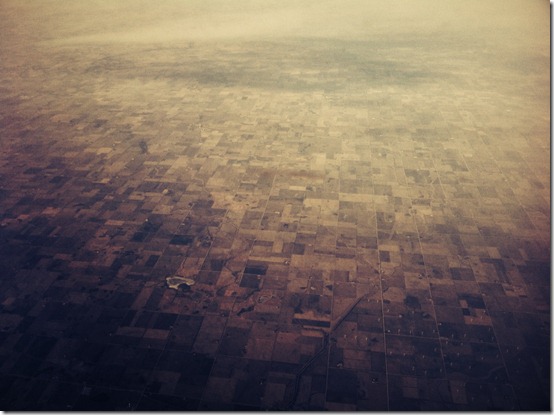













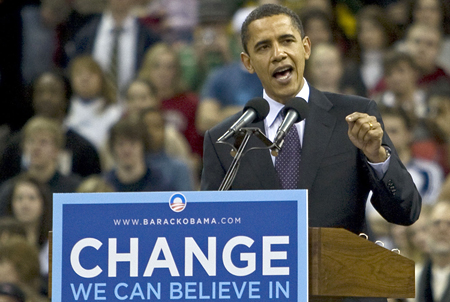
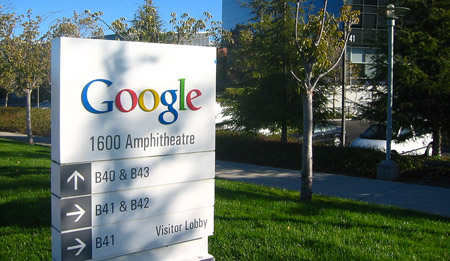
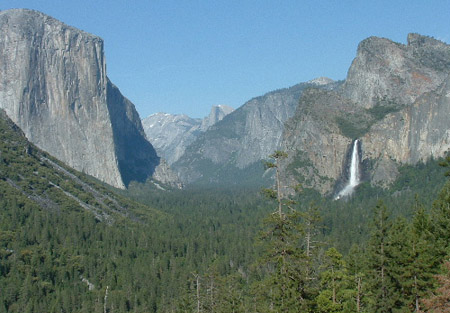
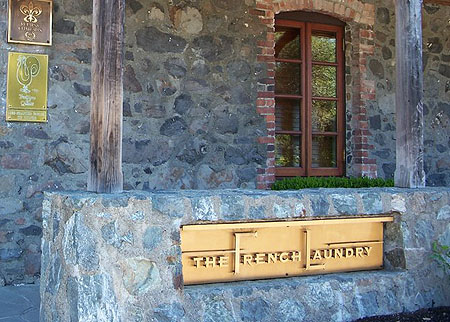
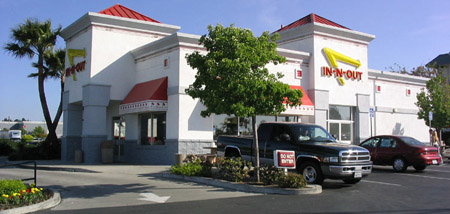
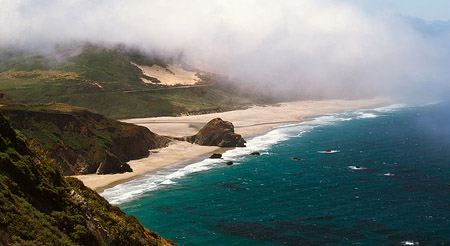
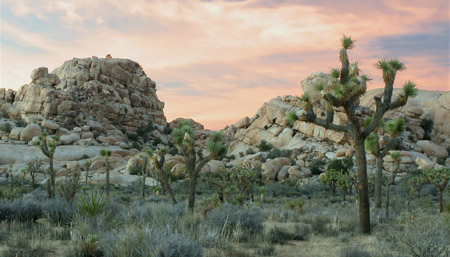

















































































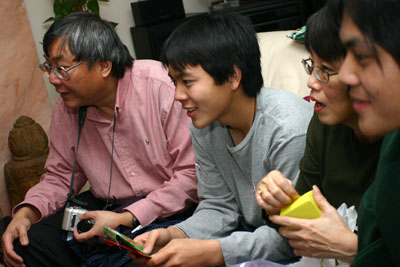

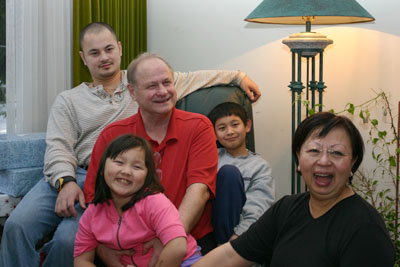
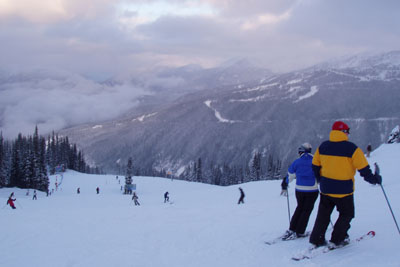
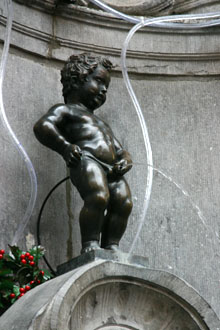

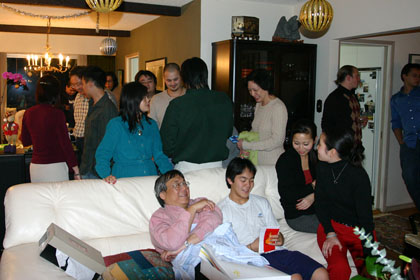
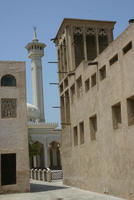

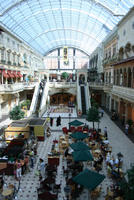
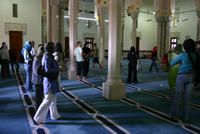

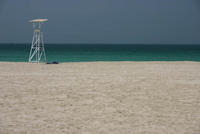

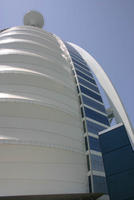
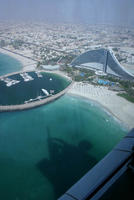
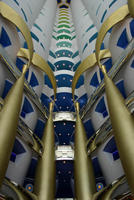
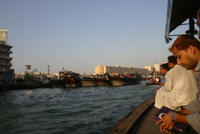
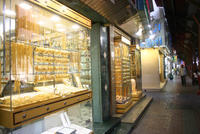
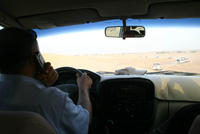
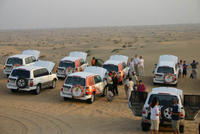
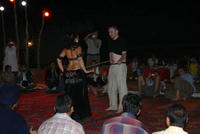

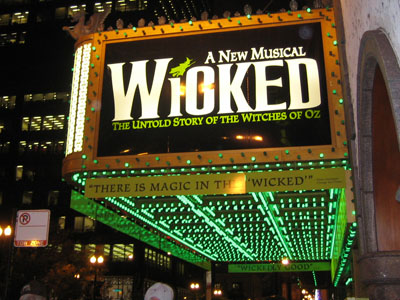




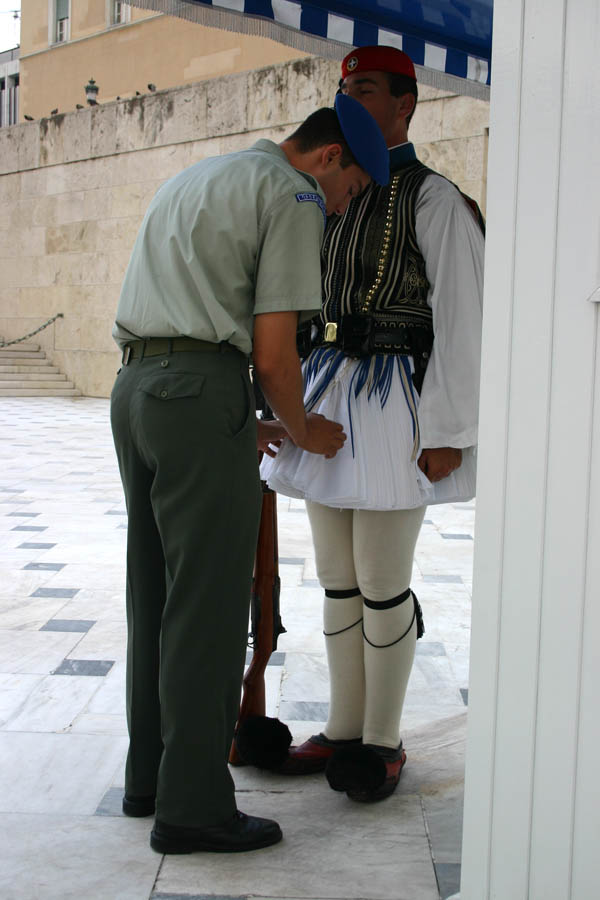
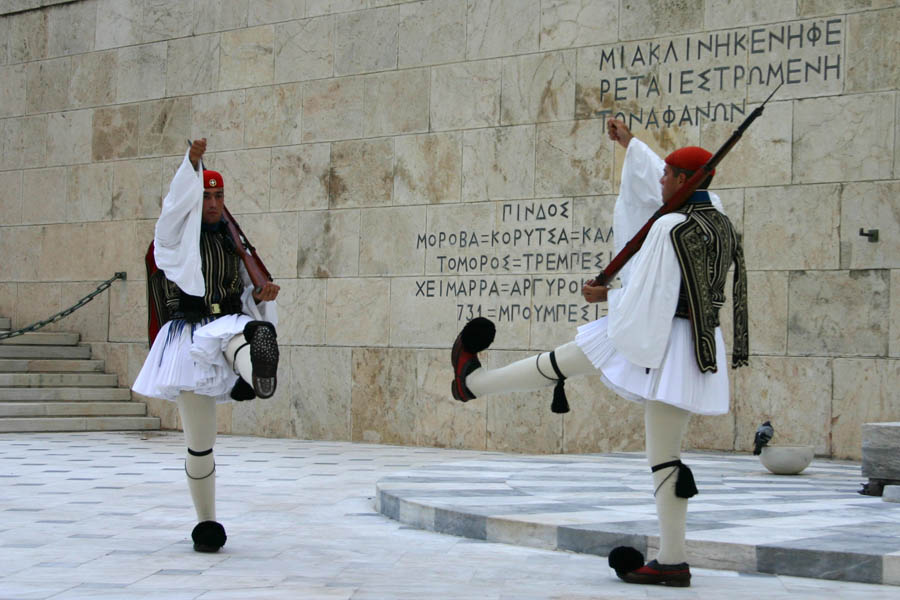
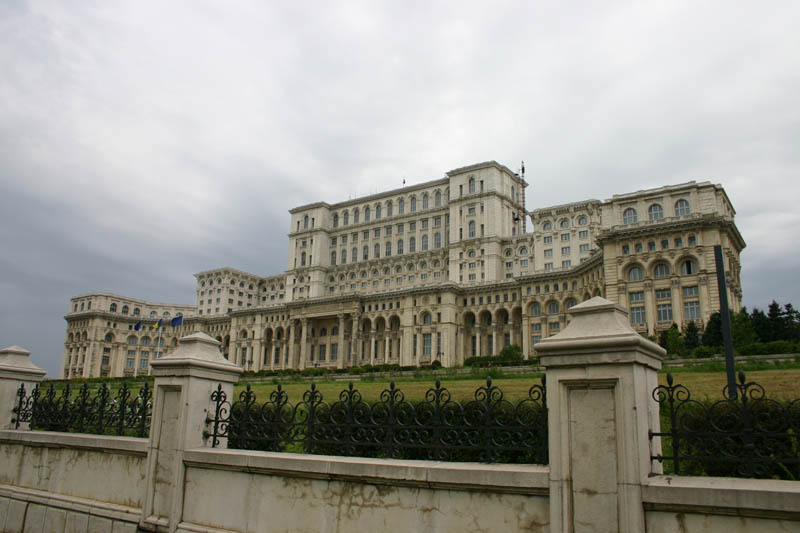
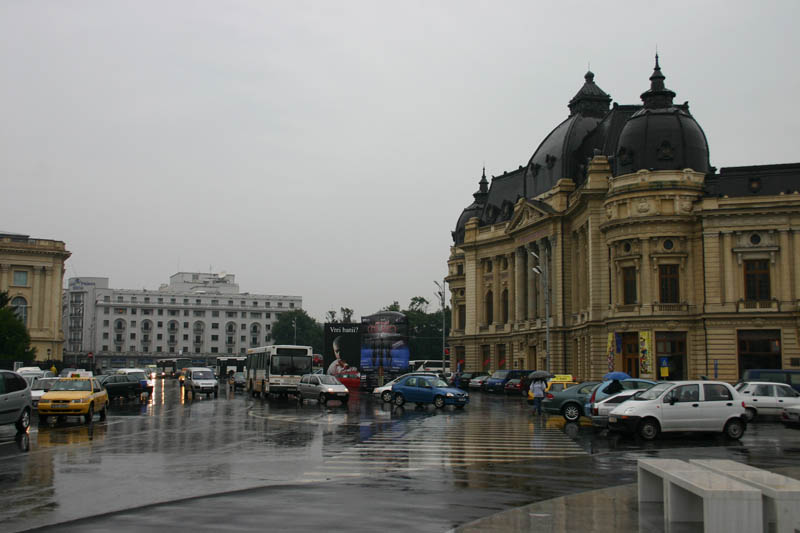
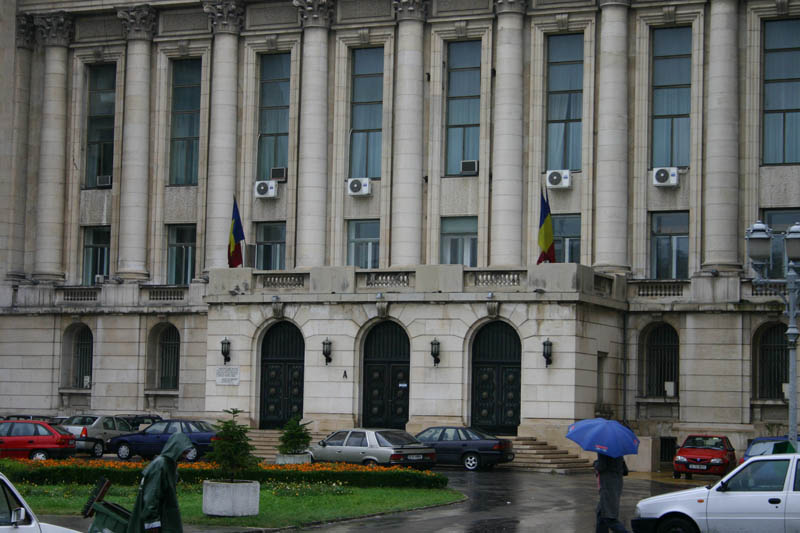
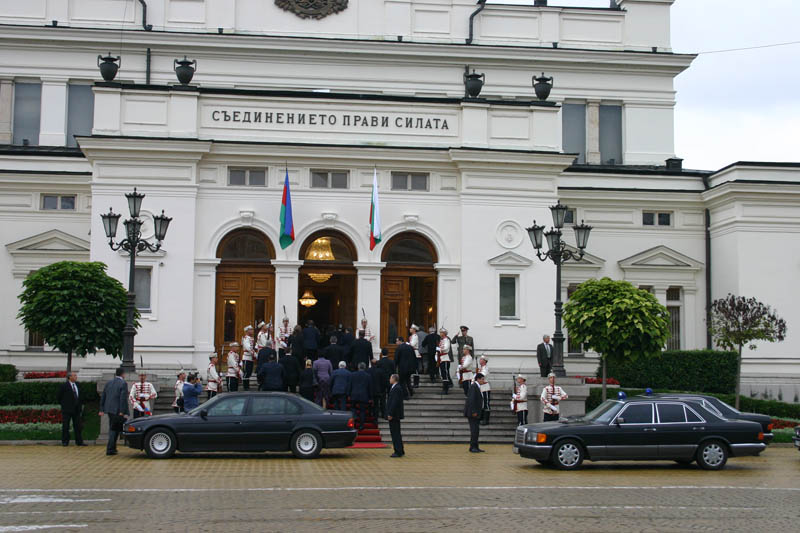

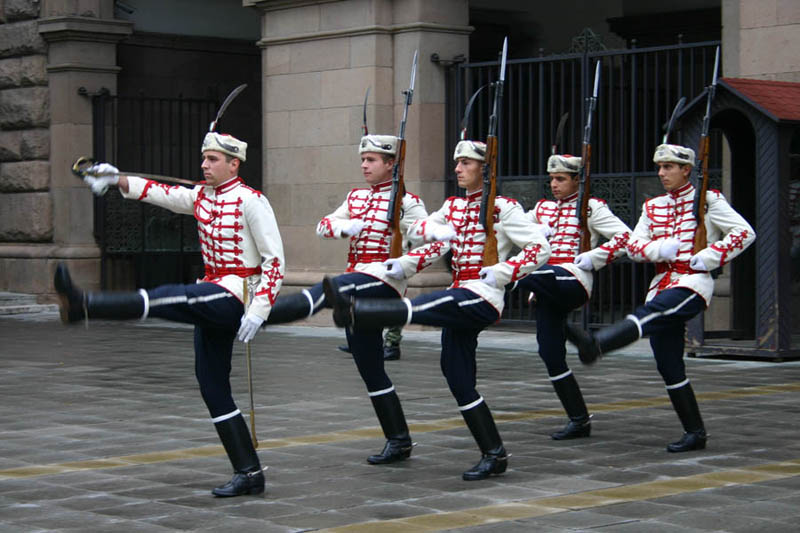

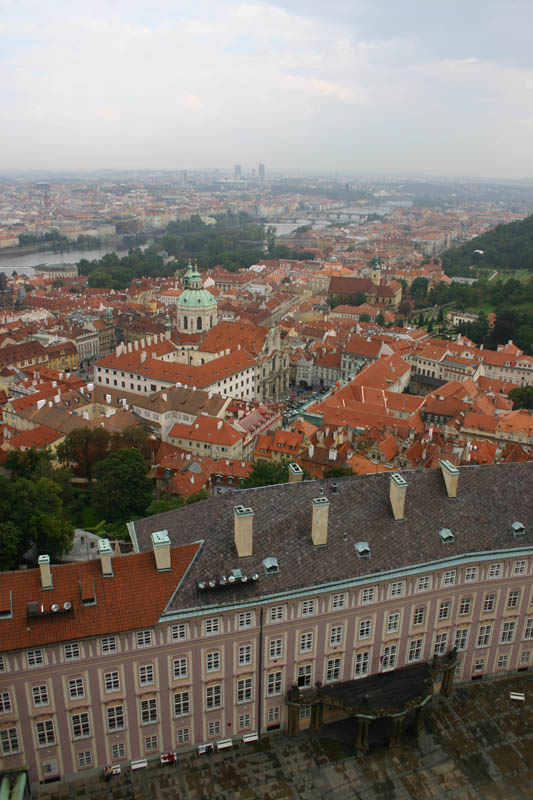
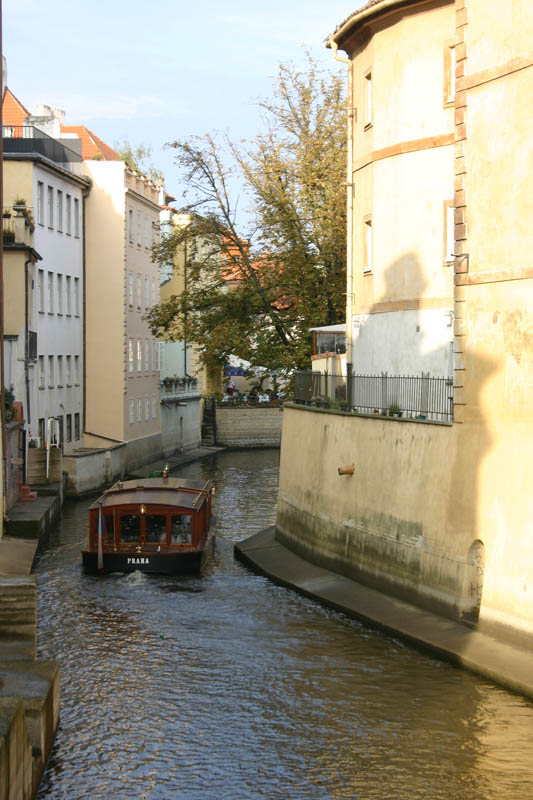

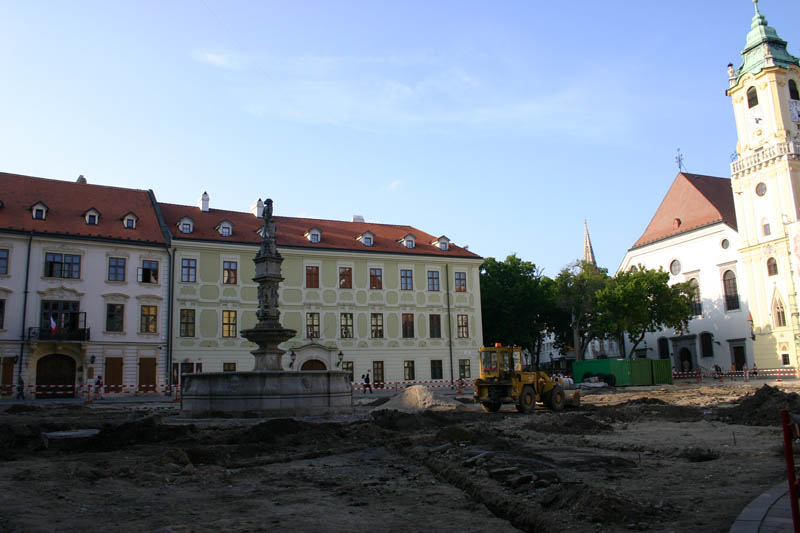
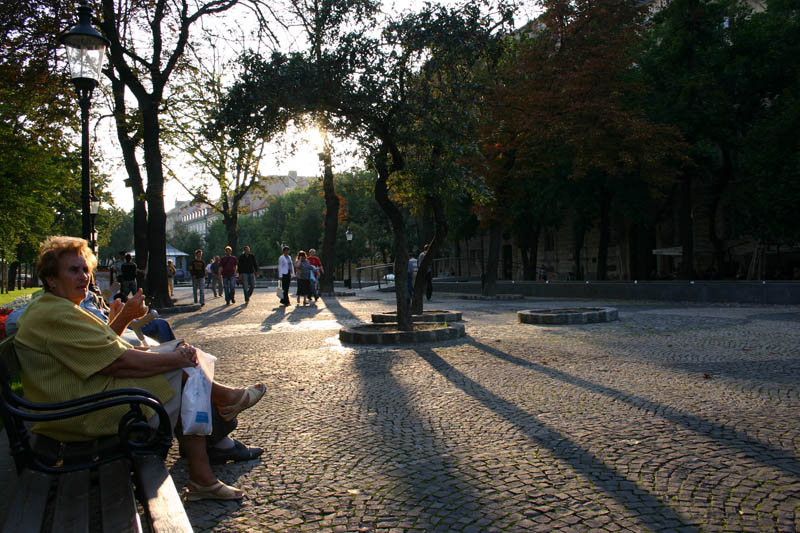
&p=2005travel/bratislava4.jpg)
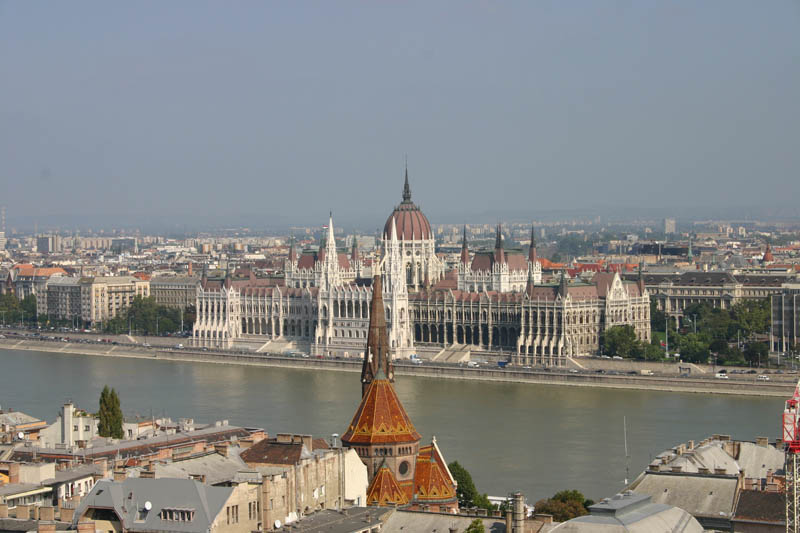
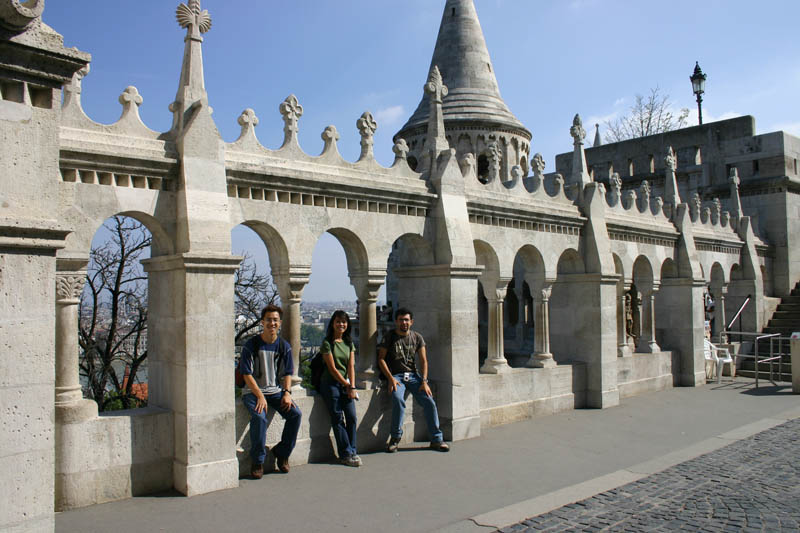
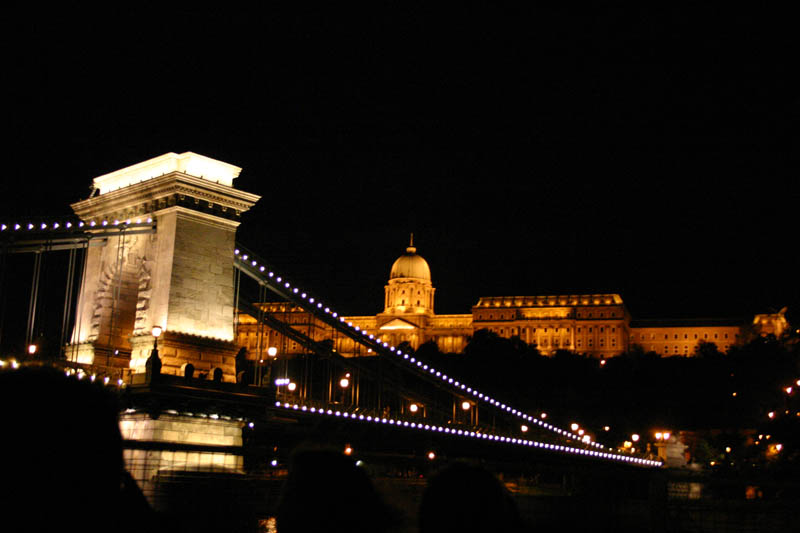
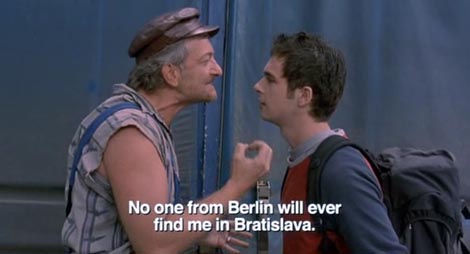
&p=2005travel/clothmarket.jpg)
















